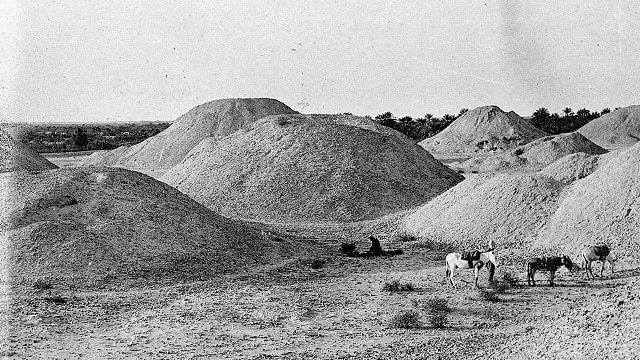Bahrain’s ancient DNA holds key to malaria immunity, reveals study
By Raji Unnikrishnan
A study done on human remains from Abu Saiba and Hamad Town around 2000 years shed light on Bahrain’s battle against malaria, suggesting genetic resistance developed following the emergence of agriculture.
DNA analysis of four individuals from Bahrain’s Tylos era has revealed the presence of the G6PD-Mediterranean gene, known for its anti-malarial properties, offering insights into the kingdom’s historical immunity to the disease.
The study titled ‘Ancient genomes illuminate eastern Arabian population history and adaptation against malaria’ was led by Dr Rui Martiniano at Liverpool John Moores University, alongside experts from Bahrain Authority for Culture and Antiquities (BACA), the University of Birmingham Dubai, the University of Cambridge, and other Arabian institutes such as the Mohammed Bin Rashid University of Medicine and Health Sciences, Dubai, as well as research centres in Europe, including Université Lumière Lyon 2, Trinity College Dublin, and others. The group has published its findings in Cell Genomics, an open access journal that publishes multi-disciplinary research at the intersection of genomics and the life sciences.
According to BACA Antiquities and Museums director Dr Salman Almahari, the groundbreaking revelation will propel further research in the region.

“This is the first of its kind research to be done in Bahrain, which is using the DNA to study the ancient human bodies or skeletons or bones,” Dr Almahari told Bahrain This Week.
“The fact remains that study based on DNA extracts from bones and skeletons are very difficult in our region or in Bahrain due to the burial environment, which is hot, wet and salty. However we got a good result and this is the beginning. Yes, we can do more, and we can get more results in the future. And, these kinds of studies using the latest scientific knowledge are very important to understand the past of the people who lived in this island.”
Researchers discovered that the ancestry of Tylos-period inhabitants of Bahrain comprises sources related to ancient groups from Anatolia, the Levant, and the Caucasus. The four Bahrain individuals were genetically more like present-day populations from the Levant and Iraq than Arabians.
“Human remains from Abu Saiba and Hamad Town, around 2000 years old, reveal information that the inhabitants of the ancient east Arabian island gained genetic resistance to malaria after the emergence of agriculture in the region about five thousand years ago,” said Dr Almahari.

“DNA analysis of the remains of four people who lived in Bahrain during the Tylos era (300 to 600 BC), the first ancient genomes from the east of the Arabian island, has revealed the presence of the G6PD-Mediterranean gene boom, the anti-malaria gene, in three samples.
“Our study also paves the way for future research that will shed light on human population movements in Arabia and other regions with harsh climates where it is difficult to find well-preserved sources of DNA.”
Researchers collected ancient human remains from archaeological collections stored at the Bahrain National Museum. They extracted DNA from 25 individuals, but only four were sequenced for higher coverage due to poor preservation.
“According to our estimates, the G6PD Mediterranean mutation rose in frequency around five-to-six thousand years ago, coinciding with the onset of agriculture in the region, which would have created ideal conditions for the proliferation of malaria,” said lead researcher Dr Martiniano.
Due to poor ancient DNA preservation in hot and humid climates, no ancient DNA from Arabia has been sequenced until now, preventing the direct examination of the genetic ancestry of its past populations.
“By obtaining the first ancient genomes from Eastern Arabia, we provide unprecedented insights into human history and disease progression in this region,” observed Marc Haber, from the University of Birmingham Dubai.
“This knowledge goes beyond historical understanding, providing predictive capabilities for disease susceptibility, spread, and treatment, thus promoting better health outcomes.”
Fatima Aloraifi, from the Mersey and West Lancashire NHS Trust, cited that the rich population history of Bahrain, and more generally of Arabia, has been severely understudied from a genetic perspective.
“We provide the first genetic snapshot of past Arabian populations, obtaining important insights about malaria adaptation, which was historically endemic in the region,” she said.
Richard Durbin, from the University of Cambridge, who supervised the project, said it was an exciting project, to have been able to analyse ancient human genetic data from the remarkable burial mounds of Bahrain.
